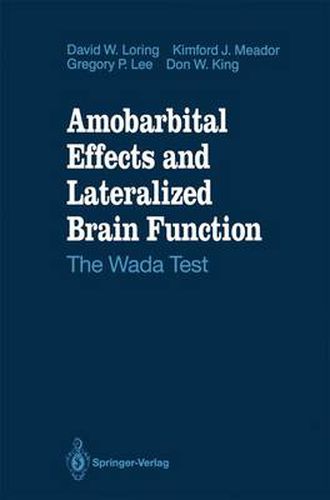This title is printed to order. This book may have been self-published. If so, we cannot guarantee the quality of the content. In the main most books will have gone through the editing process however some may not. We therefore suggest that you be aware of this before ordering this book. If in doubt check either the author or publisher’s details as we are unable to accept any returns unless they are faulty. Please contact us if you have any questions.
The intracarotid amobarbital (or Amytal) procedure is commonly referred to as the Wada test in tribute to Juhn Wada, the physician who devised the technique and performed the fIrst basic animal research and clinical studies with this method. Wada testing has become an integral part of the pre operative evaluation for epilepsy surgery. Interestingly, however, Wada initially developed this method as a technique to assess language dominance in psychiatric patients in order that electroconvulsant therapy could be applied unilaterally to the non-dominant hemisphere. Epilepsy surgery has matured as a viable treatment for intractable seizures and is no longer confmed to a few major universities and medical institutes. Yet, as is increasingly clear by examining the surveys of approaches used by epilepsy surgery centers (e.g., Rausch, 1987; Snyder, Novelly, & Harris, 1990), there is not only great heterogeneity in the methods used during Wada testing to assess language and memory functions, but there also seems to be a lack of consensus regarding the theoretical assumptions, and perhaps, even the goals of this procedure.





